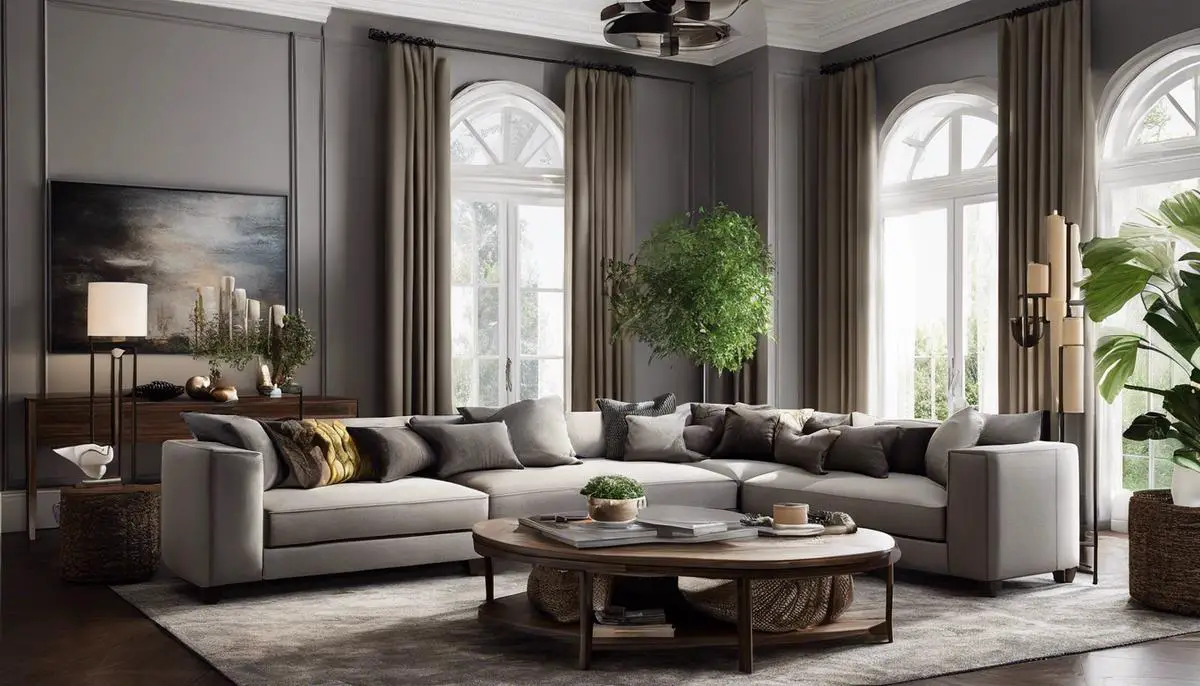In the realm of interior design, various elements play a pivotal role in determining the overall comfort and perceived space of a room. Among these factors, spatial organization, room dimensions, light settings, color schemes and themselves to the rise of minimalistic designs, all offer substantial opportunities to manipulate and optimize interior spaces for ultimate comfort and spatial illusion. This exploration will illuminate the intricate relationship between these factors and their collective impact on comfort and space in various indoor environments.
Contents
Understanding Spatial Organization
Mastering the Art of Organizing Your Interior Spaces
As enthusiasts of home interiors, we know the magic that is, channeling our hands, mind, and heart into managing our living spaces. The willingness to explore, learn, and grow in this field of interior designing has allowed us to tap into tricks and tips that can transform any area into an epitome of comfort and style. This article aims to share that knowledge so everyone can enhance own spaces for a better living.
The visionary guide to effective space organization lies within two essential concepts: Space Planning and Functional Innovation.
Space planning is critical in dictating the layout of your room. We all know space is precious, so let’s use it wisely! Start by measuring your room’s dimensions. Knowing the size and shape of your space can help determine the best layout and where your furniture should be placed. To make this easier, consider using paper cutouts of your furniture and experiment with different placement ideas.
Furthermore, remember the balancing act; keep your space visually balanced by distributing the visual weight of objects evenly. Don’t put all your bulky furniture on one side of the room! It could make the room feel off-balance and cramped.
Functional Innovation, the second key concept, is all about using items with more than one purpose. Love that stunning coffee table? Even better if it offers storage options! Items like storage ottomans, Murphy beds, and extendable tables really shine in small spaces, serving a major function and conserving space all in one.
To maximize every bit of space, think vertically. Use wall-mounted shelving, hooks, and high cabinets to pack more storage into your room. Plus, utilizing wall space can reduce floor clutter, promoting a sense of calm.
Lastly, colors and light can massively influence how big a space feels. Light colors tend to make a room feel more spacious and airy, while dark tones do the opposite. Enjoy the magic that a fresh coat of light paint or cleverly placed mirrors can bring by expanding the feel of your room dramatically.
Interior organization isn’t puzzling when you grasp the concepts of Space Planning and Functional Innovation. Armed with these insights, you’re well equipped to step up the game and make any space work for you in terms of comfort, design, and functionality. Dive into this challenge heads on, enjoy the process, and remember, perfection isn’t just about the final look; it’s about how effectively your space works for you. Cheers to mastering the art of organizing your interior spaces!
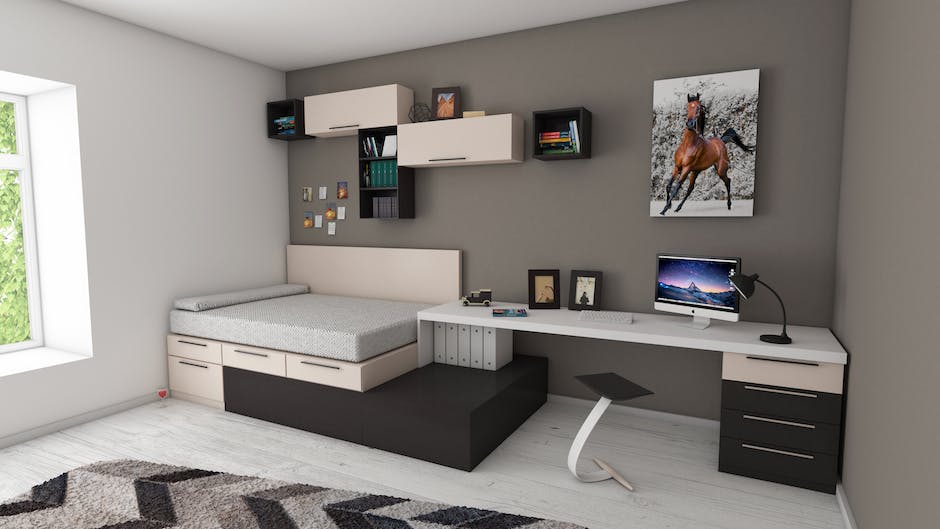
Importance of Size and Dimension
There’s been an ongoing buzz in the hobby world of interior design, circling around the effect of room dimensions on both comfort and usability. Peeking into this fascinating element of design may offer seasoned and budding hobbyists fresh insight into how space and dimensions can truly transform a room.
If it’s time to turn your attention towards the dimensions of your rooms, one of the first things you must consider is their impact on the traffic flow. Room dimensions inherently dictate how smoothly we can move around in a space. Larger rooms allow more freedom to roam, while smaller rooms tend to limit mobility, often necessitating a more thoughtful approach to furniture arrangement. Rooms with unusual shapes (think L-shapes or T-shapes) can further complicate the traffic flow, but also provide unique opportunities for niche-specific design.
Another thing you might have overlooked is that room dimensions affect sound quality. Connoisseurs of acoustics understand that dimensions, wall materials, ceiling height, and the overall layout are factors that contribute to the sound atmosphere of the room. If you plan to incorporate music or enjoy high-quality audio in your space, a deeper dive into the dimensions and acoustic properties is absolutely key.
Believe it or not, room dimensions can also play a role in eco-efficiency. Undeniably, small rooms have less air to cool or heat, helping you save energy. However, design elements like high ceilings can still make small spaces feel vast and inviting while preserving that energy efficiency. If sustainability is your concern, clever exploitation of dimensions could lead you to your greener home.
As you mold your vision into reality, be prepared to break stereotypes. Remember, a small room doesn’t necessarily mean cramped, nor is a large room automatically comfortable. It’s how you utilize these dimensions. For instance, large rooms can feel cold and impersonal without the proper furniture sizing and arrangement, while small rooms can be molded into cozy nooks with the right balance in scales.
Finally, don’t forget to utilize the power of illusion. This timeless trick in a designer’s book can work wonders in adjusting how dimensions are perceived. Mirrors and strategic placements of art pieces can make your space seem larger or cozier than it is, depending on your preference.
Certainly, the power of room dimensions is not to be underestimated in interior design. Understanding and adroitly exploiting it can redefine spaces, enhance comfort, and even lend a nod towards ecological stewardship. Keep thinking, keep exploring, and remember, in interior design, even limitations can birth masterpieces.

Role of Lighting in Space Creation
With these fascinating topics sorted out, let’s delve deeper into the incredible influence of lighting on the perception of comfort and space in a room. It’s time to shed some light—pun intended—on this crucial facet of interior design that is often taken for granted yet wields transformative power.
Lighting, both natural and artificial, plays an indispensable role in determining the perceived dimensions of a room. The clever placement and selection of light fixtures can significantly manipulate how we experience and perceive the size of a room.
Part of this relates to how shadows are created. For instance, upward-facing lights can throw shadows and create an illusion of height. Similarly, wall lights can lengthen the visual perception of walls, seemingly pushing out the boundaries of the space. Worth noting is the use of dimmer switches, which provide an easy way to adjust the lighting’s intensity according to the necessity, time, and mood, thus altering the room’s ambiance and, consequently, our perception of the space.
The power of accent lighting is often overlooked. Foregoing uniform, bright lighting in favor of carefully placed accent lights can create focal points, distract from less appealing elements, and add depth to a room, making it seem larger. Points of light scattered around the room push the walls outwards in our view, essentially expanding the space in our minds.
Then, there’s a need to highlight natural lighting, a resource that’s always available, economical, and environmentally friendly. A room washed in plenty of natural light instantly appears larger and more inviting. It’s a balancing act in the design world that makes use of mirrors, reflective surfaces, and translucent materials to increase the incidence of natural light and uplift the overall atmosphere of the room.
There’s wisdom too in the color temperature of the light. Cool white light tends to create a sense of spaciousness because it mimics daylight, whereas warm light creates a cozy, intimate environment. Hence, tuning the color temperature of the lighting can have an incredible impact on the room’s feel and perceived dimensions.
Another important consideration is the relationship between lighting and color. Different colors respond differently to various types of light, and the right pairing can profoundly impact the spatial perception. Light colors generally make a room seem bigger and brighter, but this effect can be amplified with the correct lighting.
In conclusion, lighting is an indispensable ally in the quest for comfort and space optimization in a room. A well-thought-out lighting strategy can effectively morph the perceived dimensions, setting the mood, and enhancing the comfort level of any space. Happy designing!
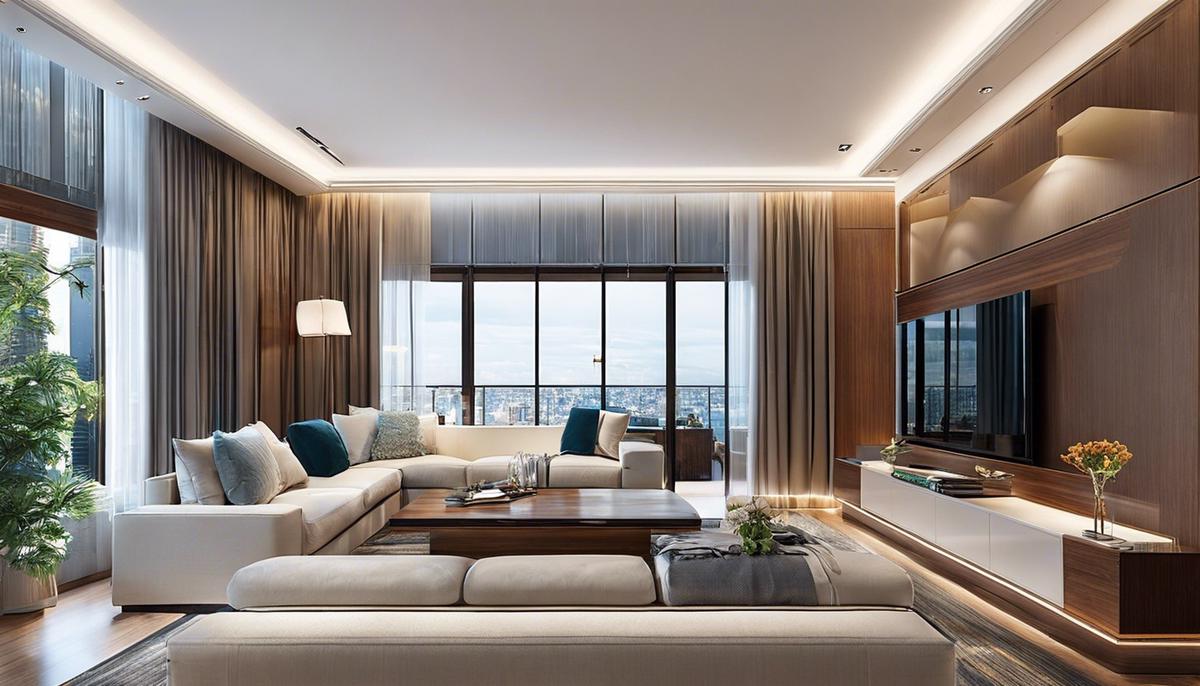
Colour and Texture Influence on Space Perception
Diving into the realm of color and texture, one might find these two elements act as the icing on the cake when it comes to interior design and its influence on comfort and space perception. They not only add aesthetic appeal but their impact extends beyond mere visual delight.
Colors, arguably, have a profound effect on our perception of space and comfort. Darker hues tend to absorb light, creating a sense of intimacy, making ample rooms appear smaller and cozier. Conversely, lighter paint colors reflect light, giving a room an airy, spacious, and breezy feel. So, if you’ve got a compact room, pastels or neutral shades will be your ally to evoke an expansive ambiance. Nevertheless, it’s always a good idea to test our color choices as they can manifest differently under various lighting conditions.
Much like colors, textures also play an influential role. Imagine walking into an expanse entirely cladded in smooth, shiny surfaces. Sure, it might look chic and contemporary, but the overly sleek space might give off a cold, impersonal vibe. On the other hand, imagine a room filled with fuzzy blankets, cushy pillows, and woven rugs. Doesn’t it instantly feel warm and inviting?
From a design perspective, glossy and sleek surfaces tend to magnify light, hence augmenting the sense of space. Whereas matte and rough finishes absorb light, reducing spatial perception but adding a touch of coziness. It’s akin to a balancing act, creating a harmony between the elements of coziness and spaciousness to achieve a comfortable and inviting environment.
Furthermore, it’s fascinating how the combination of color strategy and texture manipulation aids in defining different zones within an open floor plan, offering an inexpensive and efficient method to establish boundaries without physical divisions.
Just when you thought it couldn’t get more fascinating, color and texture show up together to create an illusion of depth and character. Decking out a wall in a dark shade paired with a highly textured material like brick or wood adds visual weight, making it appear closer and thereby broadening the room’s spatial perception. On the other hand, a shiny, light-colored wall will seem more distant, potentially extending the room’s perceived size.
There’s no one recipe for success when playing with colors and textures; it’s an exciting journey of trials, experiments, and self-expression. But the crux of the matter is, be it a small cozy corner or an open spacious loft; it’s about implementing these design elements effectively and strategically to create a room that not only pleases the eyes but also positively affects mood and well-being, leading to a space that truly feels like home.
And in the grand scheme of things, isn’t that what it’s all about? Crafting interiors that aren’t just beautiful to the eye but also nurturing to the soul. Dive in, experiment with colors and textures, and watch how you can effortlessly manipulate the perception of comfort, coziness and space in your favorite corners.
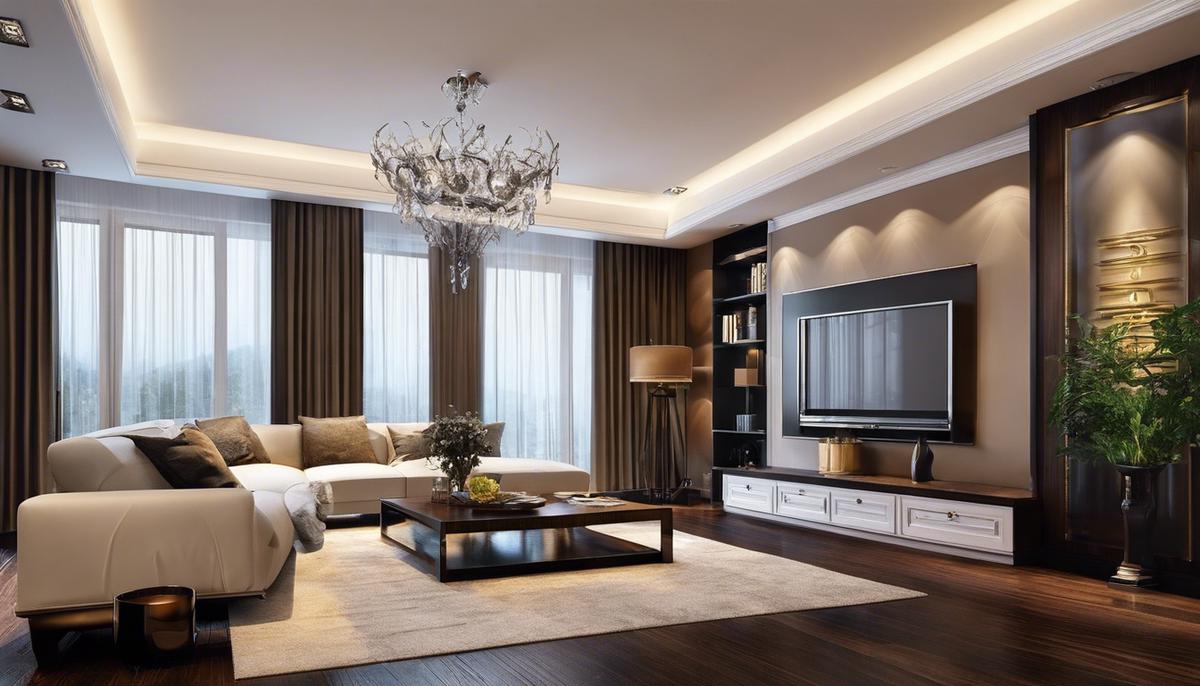
Impact of Minimalism on Living Spaces
As hobbyists of home interior designing, we’ve explored the many intricacies of balancing comfort with spatial efficiency, buzzing with the minimalist movement.
Let’s dive deeper into some untouched subjects and reveal few ways minimalism redefines our understanding of comfort and space.
Imagine a room, undoubtedly, the dimensions play a pivotal role in mapping the traffic flow. Large or small, the room size directly corresponds with how we move in a space. Minimalist design pockets these dimensions, stripping down unnecessary clutter and freeing the path. Spaces become more navigable, enhancing comfort and fluidity of motion.
Our rooms aren’t just spaces; they’re soundboxes. Room dimensions manipulate the acoustics, bouncing off, absorbing, or transmitting sound. Minimalist design keeps keen note of this, creating spaces that aren’t too echo-y nor too mute, hitting that sweet spot of acoustic balance.
We hear “eco-efficiency” a lot. And yes, it owes to room dimensions. Minimalism targets this, aiming for optimum energy savings. Eliminating excessive décor, reducing furniture and clever positioning allow for better circulation of air and natural light, cutting down on electricity while boosting comfort.
Preconceived notions tend to categorize large rooms as comfortable and small ones, the contrary. But minimalism beg to differ. With prudent selection of essential items, colors, lighting and more, a small room might outdo a sprawling space in comfort.
We highlight ‘minimalism’. But the real ace up our sleeve being illusions and design tricks. Think a large mirror giving the impression of a larger space. A tall-standing lamp inferring higher ceilings, or dark, matte walls creating an intimate environment. It’s about bending perceptions, making spaces feel bigger, warmer, cooler, cushy—all according to your heart’s desire.
And speaking of illusions, lighting undeniably stands as a primordial component. Every minimalistic space makes light—both natural and artificial—their plaything. Manipulate the tone, direction, or intensity of light, you manipulate the ambiance. From dimmer switches, accent lighting, to color temperatures, minimalism wields all strategically to reinvent perception of space and comfort.
Lastly, but never the least, we arrive at colors and textures. Transform a room from a flat, formless space into a 3D living area with the clever use of these two elements. Colors, if chosen correctly, can convey different emotions, mute or amplify spatial dimensions. Meanwhile, textures implicate the touch—the feel of the space.
The glossy gleam of a metallic table surface. The warm, rough rusticity of a wooden wall. The plush softness of a rug. Minimalism utilizes these textures, often contrasting, to flesh out the room, making it more than just a visual treat, but a tactile experience.
Anonymous thus far, the minimalistic revolution of comfort and space sees a future as bright as the clutter-free spaces it champions. After all, the essence is not in having less but making less mean more.
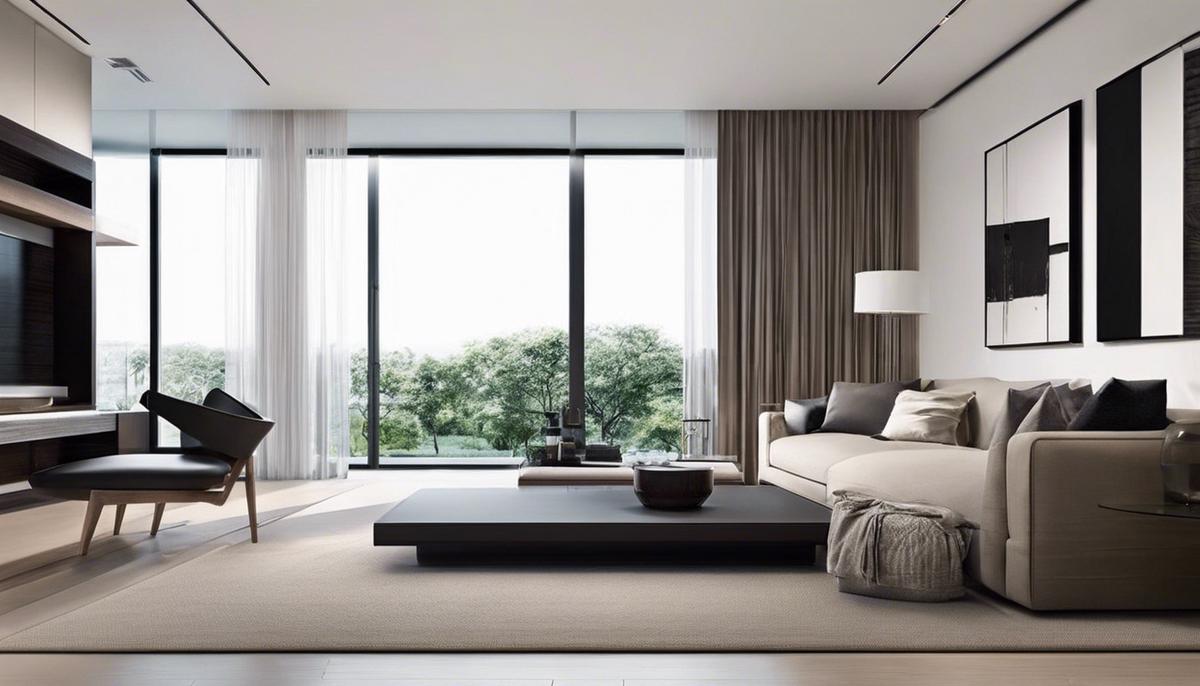
Ultimately, the confluence of appropriate spatial organization, suitable room dimensions, adept lighting, strategic color schemes, and selective textural application can generate a profound sense of comfort and openness in our spaces. Moreover, the incorporation of minimalist principles further enhances this sophistication by promoting functionality and eliminating clutter. By understanding and skillfully manipulating these factors, we can create interior spaces that are not only aesthetically pleasing but also conducive to our comfort, peace and happiness.
